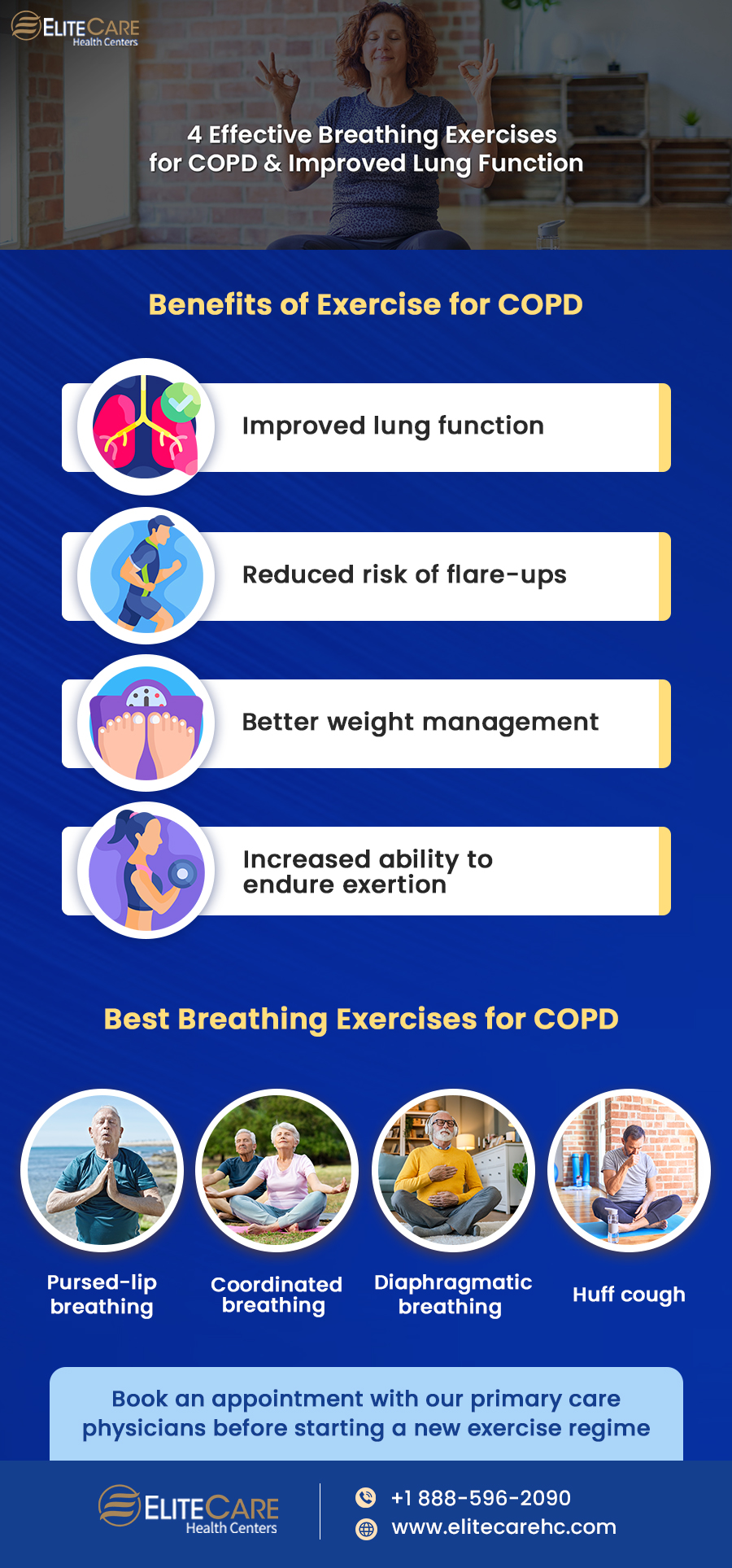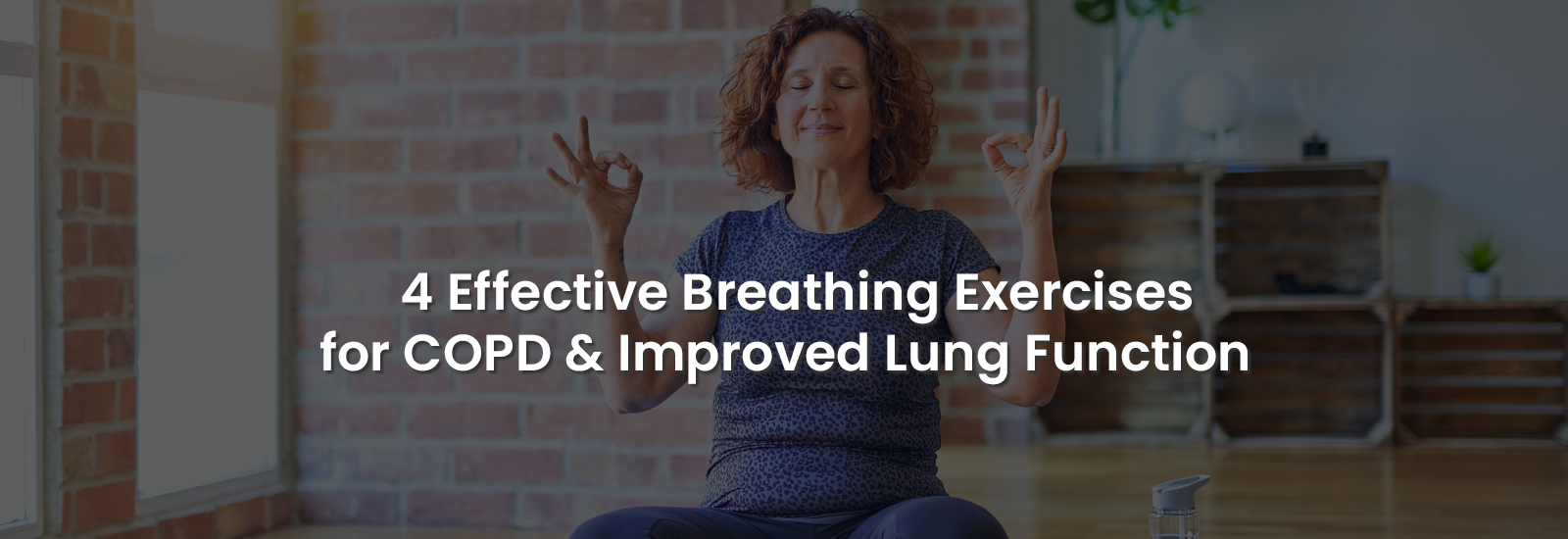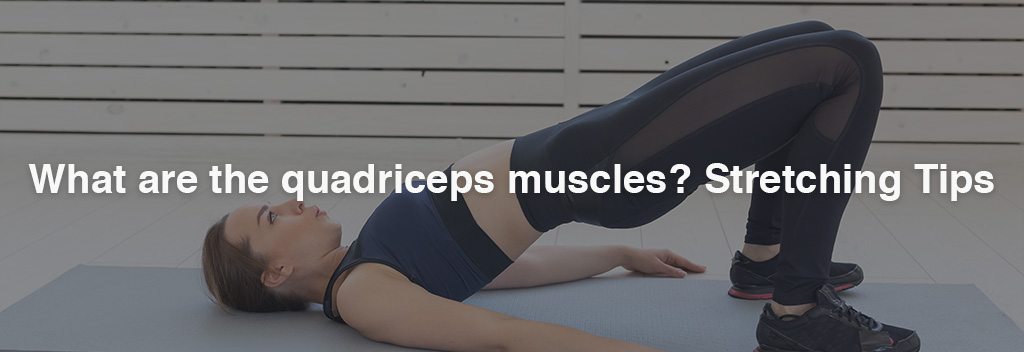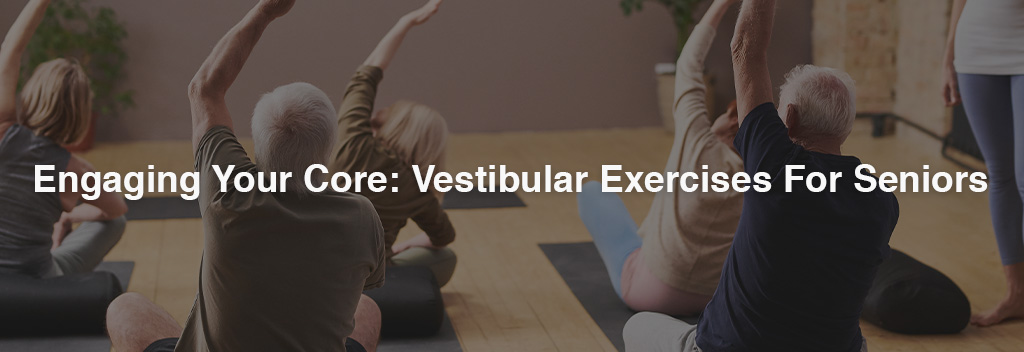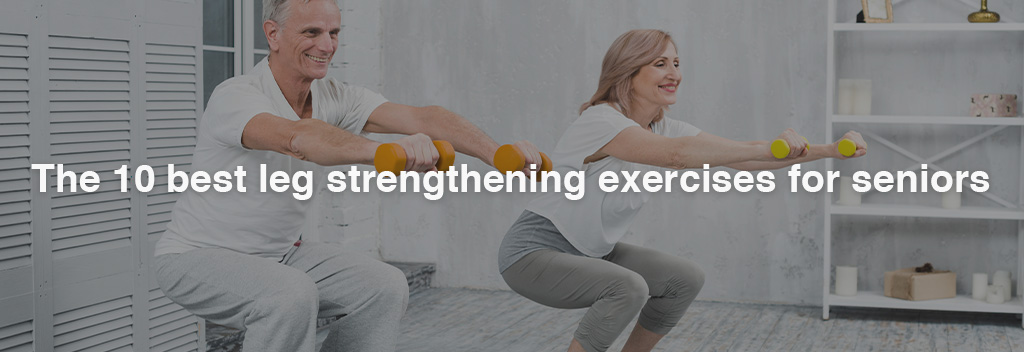
Chronic Obstructive Pulmonary Disease, or COPD, is a chronic condition that affects the respiratory system by restricting airflow to the lungs. This respiratory condition encompasses chronic bronchitis and emphysema, causing breathing difficulties, even while carrying out daily activities. COPD is often caused by long-term exposure to irritants like cigarette smoke or environmental pollutants.
Although it may seem counterintuitive to engage in physical activity when breathing is already a challenge, regular exercise can play a vital role in managing the symptoms of COPD. In this blog post, we will share the best breathing exercises for COPD and how they help in relieving its symptoms. Read on to learn more.
How Can Exercise Help Relieve the Symptoms of COPD?
The following are some ways in which exercise can help alleviate COPD symptoms:
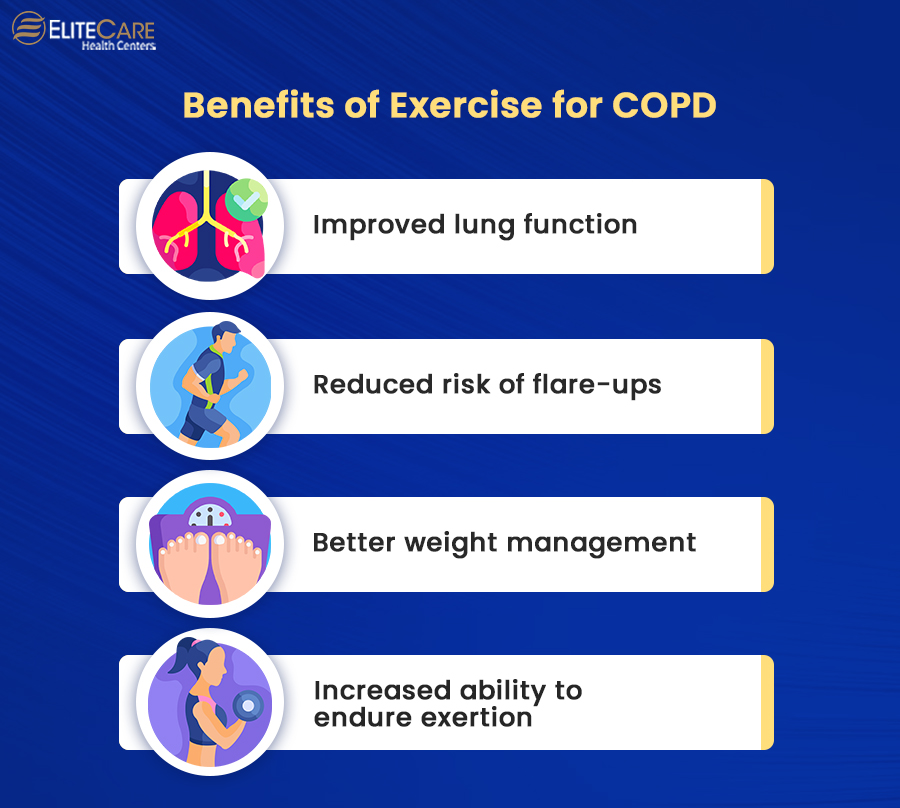
Improved lung function
Exercise helps strengthen the respiratory muscles, such as the diaphragm, and enhances lung capacity. When individuals engage in physical activity, their lungs are challenged to work harder, leading to increased oxygen intake and improving lung health.
Reduced risk of flare-ups
COPD exacerbations are periods when its symptoms get worse. Exercise can reduce the risk of flare-ups by boosting the immune system, improving lung clearance, and reducing inflammation.
Weight management
Maintaining a healthy weight is crucial for managing the symptoms of COPD. With regular exercise, individuals can burn calories and increase metabolism. It also helps preserve muscle mass while reducing excess body fat, making it easier to maintain a healthy weight.
Increased tolerance to physical exertion
COPD often causes shortness of breath and fatigue during physical activity. However, the right amount of regular exercise can improve endurance and increases the body’s ability to tolerate exertion. Over time, it can help individuals perform daily activities, such as walking or climbing stairs, without experiencing breathlessness.
Best Breathing Exercises for COPD
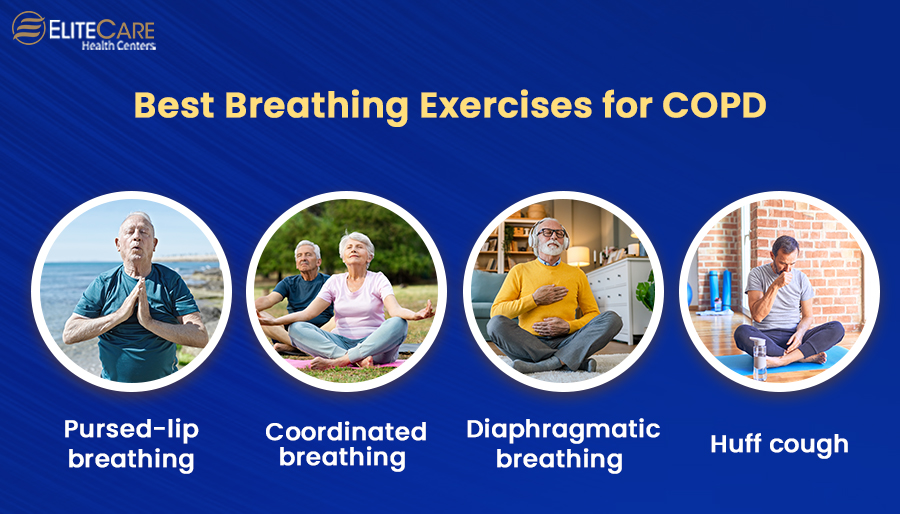
1. Pursed-lip breathing
This technique helps regulate breathing patterns and improves airway resistance. It also helps release trapped air, therefore, enhancing oxygen exchange and reducing the strain on lung muscles.
How to do it?
- Sit or stand in a comfortable position.
- Relax your neck and shoulders.
- Breathe in slowly using only your nose as you count to two.
- Purse your lips as if you are about to whistle or blow out a candle.
- Exhale gently and slowly through pursed lips for a count of four.
- Repeat this cycle for a few minutes.
2. Coordinated breathing
This breathing exercise for COPD involves a combination of controlled breathing and gentle upper-body movements. Coordinated breathing helps improve breathing efficiency by enhancing lung capacity and strengthening respiratory muscles. The synchronized breathing pattern also promotes relaxation and reduces anxiety.
How to do it:
- First, sit or stand in a comfortable position to begin the exercise.
- Slowly, take a deep breath through your nose while simultaneously raising your arms out to the sides and over the head.
- While exhaling through pursed lips, lower your arms back to your sides.
- Repeat 10-15 times.
3. Diaphragmatic breathing
Also known as belly breathing, this technique involves the use of the diaphragm, a major respiratory muscle. As one utilizes the diaphragm for deep breathing, it helps increase oxygen supply to the lungs and improve ventilation. It helps reduce rapid, shallow breathing and improves lung expansion.
How to do it?
- While sitting or lying down, place one hand on your chest and the other on your abdomen.
- Inhale slowly through your nose, focusing on filling your abdomen with air. During this time, your chest should remain relatively still.
- Breathe out slowly through pursed lips while focusing on contracting your abdominal muscles.
- Repeat for several minutes.
4. Huff cough
Primary care physicians often recommend this breathing exercise for COPD to clear mucus from the airways. Huff cough exercise helps alleviate congestion and reduces the risk of respiratory infections.
How to do it?
- Sit upright and breathe slowly and deeply through your nose.
- Hold your breath for a few seconds and then forcefully exhale in three short, sharp bursts, saying ‘huff’ or ‘ha’.
- Take a deep, relaxed breath in through your nose and exhale slowly.
- Repeat the cycle several times.
Other Exercises to Consider for COPD
In addition to the breathing techniques, individuals can incorporate the following exercises for more effective results:
Stretching
It not only helps improve flexibility but also is useful as a great warm-up exercise to relieve muscle tension and promote better posture.
Aerobic exercises
Moderate-intensity activities like walking, cycling, or swimming can strengthen the heart and increase endurance. These exercises can reduce breathlessness and exhaustion in individuals suffering from COPD.
Resistance training
These exercises involve the use of weights or resistance bands to build muscle strength. Resistance training enhances endurance, improves functional capacity, and reduces the strain on the respiratory system.
Yoga
This ancient practice combines deep breathing, gentle movements, and mindfulness to enhance oxygen supply to the lungs, increase lung capacity, improve flexibility, and promote relaxation in individuals with COPD.
Read More: Why Should Seniors Practice Yoga?
Tai Chi
The slow, flowing movements and deep breathing techniques promote balance, coordination, relaxation, and improved breathing control.
Before starting an exercise program, individuals should consult a primary care physician to ensure it is safe and appropriate for their conditions.
How Often Should You Exercise?
For optimum results, start slowly and gradually build up to exercise sessions lasting 20 to 30 minutes. Try to maintain consistency and practice these exercises at least 3 to 4 times every week.
What is the Rated Perceived Exertion (RPE) Scale & How Does It Work for COPD?
The Rated Perceived Exertion (RPE) Scale is a subjective measure used for assessing the intensity of physical activity.
Here’s how an RPE scale measures exertion levels:
- 0- No exertion at all
- 1- Very light exertion (minimal effort required)
- 2- Light exertion (easy and comfortable)
- 3- Moderate exertion (still feels comfortable but noticeable effort)
- 4- Somewhat heavy exertion (breathing and heart rate increasing, starting to feel tired)
- 5- Heavy exertion (feeling noticeably tired but still able to continue)
- 6- Strong exertion (starting to experience fatigue and breathlessness)
- 7- Very strong exertion (feeling very tired, increased breathlessness)
- 8- Extremely strong exertion (having trouble continuing)
- 9- Maximal exertion (highest level of effort that one can sustain for a short period)
- 10- Peak exertion (maximum effort, cannot continue anymore)
Individuals with COPD often have lower exercise tolerance and may experience breathlessness during physical activity. The RPE scale allows them to monitor and adjust their exercise intensity based on their perceived level of effort rather than relying solely on objective measures such as heart rate or oxygen saturation. It promotes self-awareness and helps individuals make informed decisions regarding their exercise program.
When to See a Doctor
Timely intervention with medication, lifestyle changes, and proper exercise can go a long way when it comes to managing the symptoms of COPD. Individuals should consult a primary care physician immediately if they notice the following symptoms:
- A chronic cough that lasts for weeks or months
- Shortness of breath, especially during physical activity or even while resting
- A whistling or squeaky sound while breathing
- Chest tightness
- Recurrence of moderate to severe respiratory infections, such as bronchitis or pneumonia
- Persistent tiredness or lack of energy
For any queries or concerns about COPD, contact EliteCare Health Centers, one of the top medical clinics in Florida, providing a wide range of senior care services.
